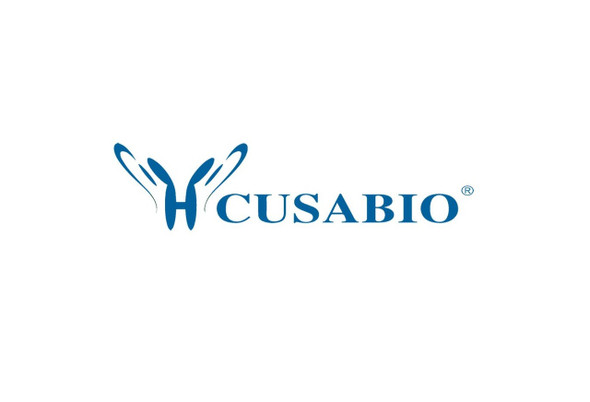Cusabio Human Recombinants
Recombinant Human Aspartyl/asparaginyl beta-hydroxylase (ASPH), partial | CSB-EP002226HU
- SKU:
- CSB-EP002226HU
- Availability:
- 3 - 7 Working Days
Description
Recombinant Human Aspartyl/asparaginyl beta-hydroxylase (ASPH), partial | CSB-EP002226HU | Cusabio
Alternative Name(s): Aspartate beta-hydroxylase ;ASP beta-hydroxylase;Peptide-aspartate beta-dioxygenase
Gene Names: ASPH
Research Areas: Signal Transduction
Organism: Homo sapiens (Human)
AA Sequence: FDLVDYEEVLGKLGIYDADGDGDFDVDDAKVLLGLKERSTSEPAVPPEEAEPHTEPEEQVPVEAEPQNIEDEAKEQIQSLLHEMVHAEHETEHSYHVEETVSQDCNQDMEEMMSEQENPDSSEPVVEDERLHHDTDDVTYQVYEEQAVYEPLENEGIEITEVTAPPEDNPVEDSQVIVEEVSIFPVEEQQEVPPDT
Source: E.coli
Tag Info: N-terminal 6xHis-SUMO-tagged
Expression Region: 75-270aa
Sequence Info: Partial of Isoform 6
MW: 38.2 kDa
Purity: Greater than 90% as determined by SDS-PAGE.
Relevance: Isoform 1: specifically hydroxylates an Asp or Asn residue in certain epidermal growth factor-like (EGF) domains of a number of proteins.
Reference: DNA sequence and analysis of human chromosome 8.Nusbaum C., Mikkelsen T.S., Zody M.C., Asakawa S., Taudien S., Garber M., Kodira C.D., Schueler M.G., Shimizu A., Whittaker C.A., Chang J.L., Cuomo C.A., Dewar K., FitzGerald M.G., Yang X., Allen N.R., Anderson S., Asakawa T. , Blechschmidt K., Bloom T., Borowsky M.L., Butler J., Cook A., Corum B., DeArellano K., DeCaprio D., Dooley K.T., Dorris L. III, Engels R., Gloeckner G., Hafez N., Hagopian D.S., Hall J.L., Ishikawa S.K., Jaffe D.B., Kamat A., Kudoh J., Lehmann R., Lokitsang T., Macdonald P., Major J.E., Matthews C.D., Mauceli E., Menzel U., Mihalev A.H., Minoshima S., Murayama Y., Naylor J.W., Nicol R., Nguyen C., O'Leary S.B., O'Neill K., Parker S.C.J., Polley A., Raymond C.K., Reichwald K., Rodriguez J., Sasaki T., Schilhabel M., Siddiqui R., Smith C.L., Sneddon T.P., Talamas J.A., Tenzin P., Topham K., Venkataraman V., Wen G., Yamazaki S., Young S.K., Zeng Q., Zimmer A.R., Rosenthal A., Birren B.W., Platzer M., Shimizu N., Lander E.S.Nature 439:331-335(2006)
Storage: The shelf life is related to many factors, storage state, buffer ingredients, storage temperature and the stability of the protein itself. Generally, the shelf life of liquid form is 6 months at -20?/-80?. The shelf life of lyophilized form is 12 months at -20?/-80?.
Notes: Repeated freezing and thawing is not recommended. Store working aliquots at 4? for up to one week.
Function: Isoform 1
Involvement in disease: Facial dysmorphism, lens dislocation, anterior segment abnormalities, and spontaneous filtering blebs (FDLAB)
Subcellular Location: Isoform 1: Endoplasmic reticulum membrane, Single-pass type II membrane protein, SUBCELLULAR LOCATION: Isoform 4: Sarcoplasmic reticulum membrane, Single-pass type II membrane protein, SUBCELLULAR LOCATION: Isoform 8: Endoplasmic reticulum membrane, Single-pass type II membrane protein
Protein Families: Aspartyl/asparaginyl beta-hydroxylase family
Tissue Specificity: Isoform 1 is detected in all tissues tested. Isoform 8 is mainly expressed in pancreas, heart, brain, kidney and liver. Isoform 8 is expressed in kidney (at protein level).
Paythway:
Form: Liquid or Lyophilized powder
Buffer: If the delivery form is liquid, the default storage buffer is Tris/PBS-based buffer, 5%-50% glycerol. If the delivery form is lyophilized powder, the buffer before lyophilization is Tris/PBS-based buffer, 6% Trehalose, pH 8.0.
Reconstitution: We recommend that this vial be briefly centrifuged prior to opening to bring the contents to the bottom. Please reconstitute protein in deionized sterile water to a concentration of 0.1-1.0 mg/mL.We recommend to add 5-50% of glycerol (final concentration) and aliquot for long-term storage at -20?/-80?. Our default final concentration of glycerol is 50%. Customers could use it as reference.
Uniprot ID: Q12797
HGNC Database Link: HGNC
UniGene Database Link: UniGene
KEGG Database Link: KEGG
STRING Database Link: STRING
OMIM Database Link: OMIM









